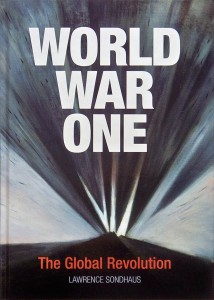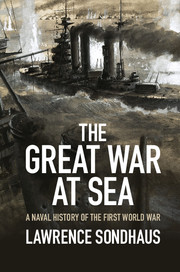Historian: WWI tensions echo in today’s world

Saturday marks the 100th anniversary of the spark that ignited the first truly global military conflict, and despite the passage of time, many current international crises can be linked to the chain of events we now call World War I, a University of Indianapolis historian and author says.
Tensions unleashed by the June 28, 1914, assassination of Austrian Archduke Franz Ferdinand still linger behind key foreign policy dilemmas the United States faces today, says Lawrence Sondhaus, professor and chair of UIndy’s Department of History & Political Science.
 “The dynamics are eerily similar,” says Sondhaus, whose 12 books on military history include 2011’s World War I: The Global Revolution and a new tome, The Great War at Sea, both from Cambridge University Press. He specializes in European perspectives on the war and will serve as keynote speaker at an October anniversary conference sponsored by the Austrian and Serbian governments.
“The dynamics are eerily similar,” says Sondhaus, whose 12 books on military history include 2011’s World War I: The Global Revolution and a new tome, The Great War at Sea, both from Cambridge University Press. He specializes in European perspectives on the war and will serve as keynote speaker at an October anniversary conference sponsored by the Austrian and Serbian governments.
The current sectarian strife in Iraq, Sondhaus notes, echoes the challenges the United Kingdom faced a century ago while trying to manage a territory carved from remnants of the defeated Ottoman Empire. Struggling Iraqi Prime Minister Nouri Al Maliki, a compromise candidate the United States hoped could keep the nation together, comes from the same local clan with whom the British negotiated when they occupied the country, then known as Mesopotamia, at the end of World War I.
“They had to cut deals to pacify people,” Sondhaus says. “Ninety years later, the U.S. had to do the same thing.”
In Palestine during the war, he says, diplomatic overtures convinced both Arabs and Jews that the Allies had guaranteed them a homeland, fueling decades of strife. Today’s concerns in Ethiopia, Somalia and the Darfur region of Sudan also have roots in the lesser-known peripheral campaigns of World War I.
Obvious connections can be drawn to the current uncertainty in Ukraine. Just as before, the nation finds itself torn between Russia on its east and the rest of Europe – exemplified by Germany – to its west. The strategic Crimean Peninsula, with its seaports, is the key prize at stake.
“The way that’s playing out is a lot like 1917, 1918,” Sondhaus says. “Ukrainians are a minority in the Crimea. Traditionally, Ukraine has been able to assert its sovereignty there only if Russia allows it. That’s the same dynamic you’ve seen playing out over the last few months.”
 On a broader scale, the current post-Soviet tensions in Europe resemble those resulting from the temporary power vacuum that followed World War I, when the areas between the great continental players gained a taste of independence but were reined back in after the larger powers reasserted themselves.
On a broader scale, the current post-Soviet tensions in Europe resemble those resulting from the temporary power vacuum that followed World War I, when the areas between the great continental players gained a taste of independence but were reined back in after the larger powers reasserted themselves.
“At the end of the war, Germany and Russia were both out of the game, so you had a lot of weaker independent nations forming between the two, and that never would have happened otherwise,” Sondhaus says. “What we’re seeing 20 years after Gorbachev is sort of like what we saw 20 years after World War I.”
In other words, Vladimir Putin’s apparent intent to reassert Russian hegemony in the region is not unlike Josef Stalin’s efforts along the western borders of Soviet Russia on the eve of World War II.
“Once again, Russia wants to reshuffle the deck,” Sondhaus says. “It’s hard to tell where we are right now. There’s a kind of unsettling, 1930-ish feel to it.”
NOTE: University of Indianapolis History Professor Lawrence Sondhaus is available for interview on this and related topics. To schedule, please call (317) 371-5240.
